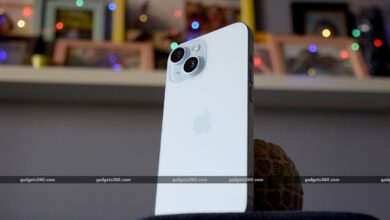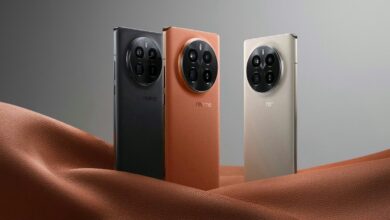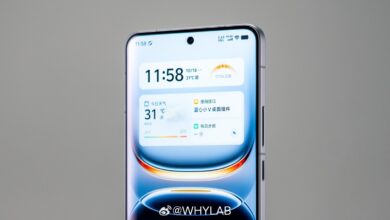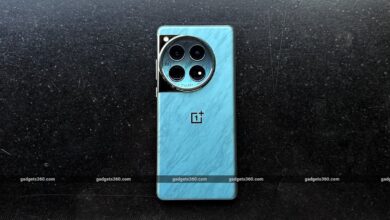Moto G85 Review: Old Wine, Slightly Newer Bottle
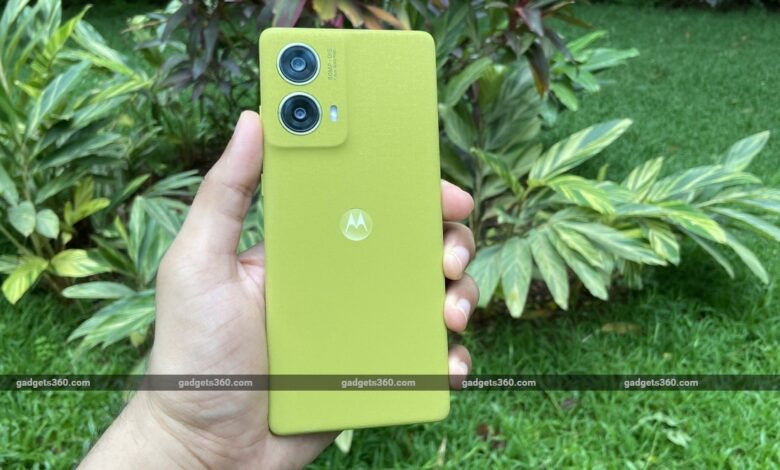
The Moto G85 5G was recently unveiled as the latest mid-range smartphone from the Lenovo-owned technology firm, equipped with a Snapdragon 6s Gen 3 chipset paired with up to 12GB of RAM, a 50-megapixel rear camera, and a 5,000mAh battery with support for 33W fast charging. This handset competes with several other affordable smartphones in the same price segment, including the OnePlus Nord CE 4 Lite 5G, CMF Phone 1, Infinix Note 40 5G, iQoo Z9, and the Samsung Galaxy M35 5G.
In India, the Moto G85 5G is priced at Rs. 17,999 for the 8GB+128GB RAM and storage configuration. The 12GB+256GB variant is priced at Rs. 19,999. The review unit sent by Motorola for this review is equipped with 256GB of storage.
Moto G85 Design: Nice to hold
- Dimensions – 161.91×73.06×7.59 mm
- Weight – 172g
- Colours – Cobalt Blue, Olive Green (in this review), and Urban Gray
One of the most notable differences between the Moto G85 5G and its predecessor is the curved display — it’s nice to see handsets with these screens under the Rs. 20,000 mark in India. The rear panel has a vegan leather finish and is quite easy to grip. Aside from Motorola’s batwing logo on the back, there’s no branding on the rear panel.
![]()
The Moto G85 features a rear panel that is quite easy to grip
Subjectively speaking, I’m not too fond of the Olive Green colour option, and it definitely appears darker than the images Motorola displays on its website. It is also prone to picking up some dirt and marks, so you’re probably better off picking the Urban Grey colourway, which is available in a matte finish. The sides of the phone are made of plastic, and it gives you the impression that this is a more affordable phone.
At the bottom, there’s a speaker grille and a USB Type-C port — but no 3.5mm audio port, unlike the Moto G84. The top edge has a microphone along with the Dolby Atmos logo, which is faintly visible in the centre. Motorola ships the Moto G85 with a charging brick and a USB Type-A to USB Type-C cable, and you also get a very slim transparent TPU cover.
Moto G85 Software: Hello, bloatware
- Software – Hello UI
- Version – Android 14
- Latest security patch – June 1, 2024
The Moto G85 runs on Android 14, with the company’s new Hello UI interface on top. This skin replaces My UX and mostly resembles Google’s version of Android, which ships on Pixel smartphones. The phone automatically installs a handful of games (Block Blast, Carrom Disc Pool, Doll Dress Up: Sweet Girl) after the setup process is completed, which is quite disappointing.
There’s another app called MotoHub that sends you notifications — about five or six notifications per day — for news stories and suggests apps to install via a dedicated home screen widget, but they’re mostly clickbait articles.
Once known for its clutter-free interface, Motorola’s latest handset contains both bloatware and notification spam
Once you disable these distractions, you’ll notice that Hello UI packs some useful tools such as Family Space, which offers parental controls, Moto Unplugged (digital wellbeing features), and Moto Secure (Secure Folder, phishing protection). In my opinion, it also offers better customisation options compared to ‘stock’ Android, and the Smart Connect lets you perform a variety of tasks on other devices using your phone.
Motorola says that users will receive two major Android updates and four years of security updates. For phones in this price segment, this is par for the course — except for the Samsung Galaxy M35, which will get four Android OS updates and five years of security updates.
Moto G85 Performance: Above average
- Processor – Snapdragon 6s Gen 3
- Memory – Up to 12GB
- Storage – Up to 256GB (UFS 2.2)
When I reviewed the OnePlus Nord CE 4 Lite, I pointed out that the 6nm Snapdragon 695 SoC on that phone was a drawback, as the chipset was three years old. The Moto G85 is equipped with a Snapdragon 6s Gen 3, a repackaged version of the same chip, with a very small improvement in CPU speed. As a result, it lags behind other phones in the same price segment, such as the iQoo Z9 or the CMF Phone 1, which are powered by 4nm MediaTek Dimensity 7200 and Dimensity 7300 chips, respectively.
I faced no issues with the Moto G85 in day-to-day tasks, which included reading the news and browsing the web on Chrome, scrolling through Instagram and X (formerly Twitter), and using WhatsApp for texting. There was a bit of lag while using Snapchat, but that’s common on a lot of smartphones in this price segment.
Moto G85 benchmark test results
Like its predecessor, the Moto G85 is able to handle games like Asphalt 9: Legends (now called Asphalt Legends Unite) and BGMI with no complaints. It can also run Genshin Impact, but you will notice a bit of lag when there are many in-game enemies, which can be a hassle in crowded dungeons. The rear panel didn’t get hot after 30 minutes of gameplay, which is good.
When you look at the benchmark scores for the Moto G85 and compare them with the ones for the OnePlus Nord CE 4 Lite, the similarities between both chipsets become even more apparent. While benchmark scores are synthetic, it’s worth keeping in mind that there are more powerful phones than these two handsets under the Rs. 20,000 mark.
Take a look at the table below to see benchmark scores for the Moto G85 compared with other smartphones available in the same price segment.
| Benchmark | Moto G85 | CMF Phone 1 | OnePlus Nord CE 4 Lite | iQoo Z9 | Realme 12 Pro |
|---|---|---|---|---|---|
| Geekbench 6 Single Core | 935 | 1,037 | 904 | 1,151 | 956 |
| Geekbench 6 Multi Core | 2,102 | 2,932 | 2,015 | 2,669 | 2,369 |
| AnTuTu v10 | 450,865 | 639,355 | 448,127 | 687,545 | 570,926 |
| PCMark Work 3.0 | 11,757 | 12,398 | 9,850 | 13,319 | 13,319 |
| 3DMark Wild Life | 1,569 | 3,122 | 1,508 | 4,126 | 4,126 |
| 3DMark Wild Life Unlimited | 1,578 | 3,131 | 1,507 | 4,205 | 4,205 |
| 3DMark Sling Shot | 4,406 | 6,690 | 4,226 | 6,654 | 6,654 |
| 3DMark Sling Shot Extreme | 3,259 | 5,177 | 3,121 | 5,766 | 5,766 |
| GFXBench Car Chase | 60 | 29 | 17 | 33 | 21 |
| GFXBench Manhattan 3.1 | 50 | 50 | 30 | 60 | 39 |
| GFXBench T-Rex | 89 | 60 | 60 | 108 | 60 |
The 6.67-inch Full-HD+ (1,080×2,400 pixels) AMOLED screen on the Moto G85 is quite bright, making it easy to use the phone in bright daylight. It has a 144Hz refresh rate, which is very responsive and scrolling through apps and websites is a smooth experience. Motorola also says the 240Hz touch sampling rate is increased to 360Hz while playing games.
The display on the Moto G85 has curved edges, but it didn’t register any accidental touches while holding the phone. It’s also a good screen for watching TV shows and movies on the go, thanks to the reliable battery life that the handset offers (more on that later). You can choose among different screen colour modes, and I found the Natural setting looked much better than the default Vivid option.
Moto G85 Cameras: AI to the rescue
- Main camera – 50-megapixel (OIS, EIS), up to 4K/ 60fps video
- Ultra-wide angle camera – 8-megapixel, up to 1080p/30fps video
- Selfie camera – 16-megapixel, up to 1080p/30fps video
The primary camera on the Moto G85 is reliable when taking photos during the daytime, and it uses some post-processing to brighten images and improve contrast while keeping exposure levels in check and preserving the original colours of the subject. Images take a couple of seconds to be processed after being clicked, but this is done in the background, and you can continue using the camera app to click additional photos.
Meanwhile, the ultra-wide angle camera on the Moto G85 captures photos that are slightly less vibrant than the primary camera. It also tends to overexpose some parts of images, and the colour accuracy is not on par with the superior primary camera. I didn’t notice a lot of distortion around the edges of photos captured with the Moto G85.![]()
Moto G85 Daylight Camera Samples. Top to bottom – Primary, ultra-wide, 2x primary (Tap images to expand)
The same post processing appears to be in use when capturing portrait images with the primary camera on the Moto G85, as the phone takes a couple of seconds to save the image. If there’s enough natural light, the camera delivers images with a soft bokeh effect and lots of detail.
The Moto G85 includes a Night Vision mode that allows you to take better photos at night, but it only works with the primary camera. While this means that you’ll have to step further away from large subjects while clicking images, it’s worth enabling the dedicated night mode for images that are brighter with more details in low-light scenarios.
For smaller subjects, the ultra-wide angle camera on the Moto G85 allows you to get close and capture images that are quite sharp using the included macro mode. When you use it to click photos of small objects during the day, there’s very little noise or smoothening on these images.![]()
![]()
Moto G85 Camera Samples. Top to bottom – 1x Night, 1x night, macro (Tap images to expand)
Using the 32-megapixel front-facing camera, you can take detailed selfies during the daytime, while low-light selfies are slightly blurry. Interestingly, the camera app on the Moto G85 includes a Pro tab that offers manual controls for all three cameras on the smartphone, including the one on the front.
The Moto G85 supports recording at 1080p/30fps while using the primary camera and ultra-wide angle camera. The same video resolution and bitrate are also supported on the front camera. The camera app lets you enable video stabilisation, and the primary camera delivers the best video quality in every scenario.
Moto G85 Battery: Quite reliable
- Battery Capacity – 5,000mAh
- Wired Charging: 33W TurboPower
- Charger: 33W (included)
The Moto G85 has a slim design, but it packs a 5,000mAh battery capable of delivering more than a day of battery life, with moderate use that includes a mix of casual gaming, texting on WhatsApp, and browsing the web or social media apps. It delivered about six hours of screen on time and about 20 hours in standby mode before I had to connect it to the charger again.
I also ran our HD video battery loop test on the Moto G85, which lasted for 21 hours and 14 minutes until the battery was fully depleted. The 33W TurboPower charging brick took 1 hour and 15 minutes to charge the battery to 100 percent.
Moto G85 Review: Verdict
If you’re looking for a smartphone with a curved OLED display and reliable camera performance, it’s worth looking at the Moto G85. The phone also offers reliable battery backup and includes useful software features focused on family controls, digital well-being, and multitasking. The bloatware and notification spam is the only drawback on an otherwise decent smartphone that offers good value for money.
Other smartphones in the same price segment are equipped with more capable processors that offer better performance, such as the iQoo Z9 (Review), CMF Phone 1 (Review), and the Realme 12 Pro (Review). However, the Moto G85 offers a more versatile camera setup compared to the iQoo and CMF handsets. The Realme 12 Pro has a telephoto camera, but it is slightly more expensive than Motorola’s offering.
You can also take a look at the OnePlus Nord CE 4 Lite 5G (Review), Infinix Note 40 5G (Review), and Samsung Galaxy M35 5G, which also compete with the Moto G85 in the same price segment. They also offer similar performance and battery life. The Galaxy M35 is also worth considering, as it is slated to receive four Android OS updates and a fifth year of security updates.

